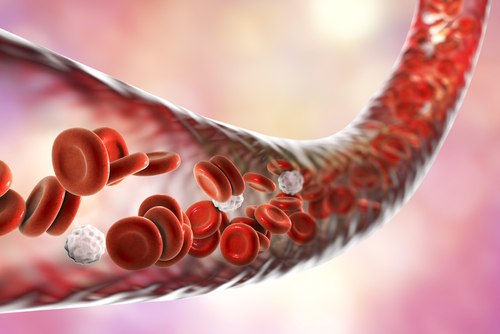Arterial Stiffness May Be Prevalent in CTEPH Patients, Small Study Suggests

Arterial stiffness, a marker of atherosclerosis, is significantly greater in patients with chronic thromboembolic pulmonary hypertension (CTEPH) compared to people with other diseases that also put them at risk of atherosclerosis, researchers report.
The study, “Increased systemic arterial stiffness in patients with chronic thromboembolic pulmonary hypertension,” was published in the Cardiology Journal.
Venous thromboembolism is a condition in which a blood clot forms, most often in the deep veins of the leg, groin or arm, and travels in the blood until it lodges in the lungs and leads to pulmonary embolism (PE). PE refers to a sudden blockage of a major blood vessel (artery) in the lung and can cause major lung damage.
CTEPH, a type of pulmonary hypertension, is a rare but severe complication of venous thromboembolism (VTE).
A number of recent studies have suggested that atherosclerosis (a disease in which plaque builds up inside arteries) and VTE may arise from similar inflammatory processes.
The development of atherosclerosis leads to structural and functional changes in the arteries, and is particularly associated with a reduction in the arteries’ elastic properties (important for blood flow) and increased stiffness.
In fact, stiffening of the aorta (the largest artery in the body) is one of the earliest detectable markers of cardiovascular changes, and can help predict cardiovascular events.
Aortic stiffening is measured through a technique called the carotid-femoral pulse wave velocity (PWV), which is considered the gold standard assessing arterial stiffening. PWV can also help predict cardiovascular mortality.
Interested in PH research? Check out our forums and join the conversation!
Known risk factors associated with high arterial stiffness include age, hypertension, gender, and other classic cardiovascular disease risk factors.
To determine if a connection exists between arterial stiffness and CTEPH, researchers set out to assess arterial stiffening in these patients using PWV, comparing results with age- and gender-matched control group.
In total, 26 CTEPH patients (mean age, 69) and 22 control patients (mean age, 67 ) were analyzed. All underwent a physical examination, carotid-femoral PWV, and transthoracic echocardiography (imaging of the heart using ultrasound).
Researchers found that CTEPH patients had significantly higher PWV (an average of 10.3 m/s) than did those in the control group (average 9 m/s), even though the blood pressure was higher in control patients.
These results suggest that arterial stiffness is prevalent in CTEPH patients, a problematic finding, as one study showed that even a 1 m/s rise increases cardiovascular risk by more than 10%.
Arterial stiffening, as defined by a PWV value higher than 10 m/s, was found in 42% of the CTEPH patients analyzed (11 of 26 patients), and in 23% of those in the control group (5 of 22).
PWV was also found to correlate with age and pulmonary vascular resistance (a measure of the resistance offered by the pulmonary circulation) in CTEPH patients — those with a PWV greater than 10 m/s tended to be older, to have poorer oxygen saturation in the blood (SaO2), and higher pulmonary vascular resistance.
The team concluded that arterial stiffness is found to a greater degree in CTEPH patients.
Although the study was small, these findings also “point to a significant correlation between arterial stiffening, assessed by PWV, and low SaO2, older age, and increased PVR. They also suggest an association between increased stiffness of the systemic arteries with the occlusion of pulmonary arteries and decreased blood oxygenation in patients with CTEPH,” the researchers wrote.







